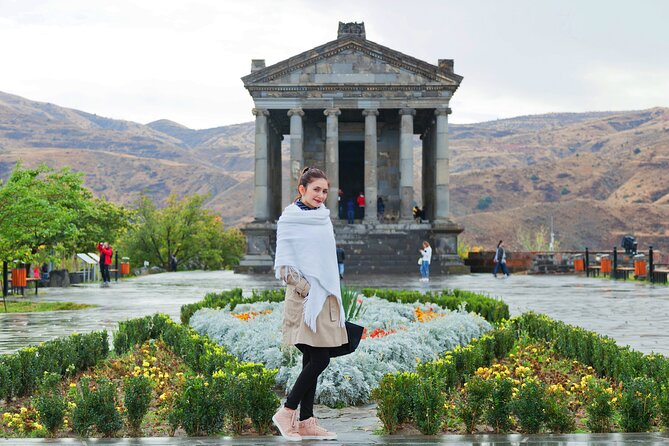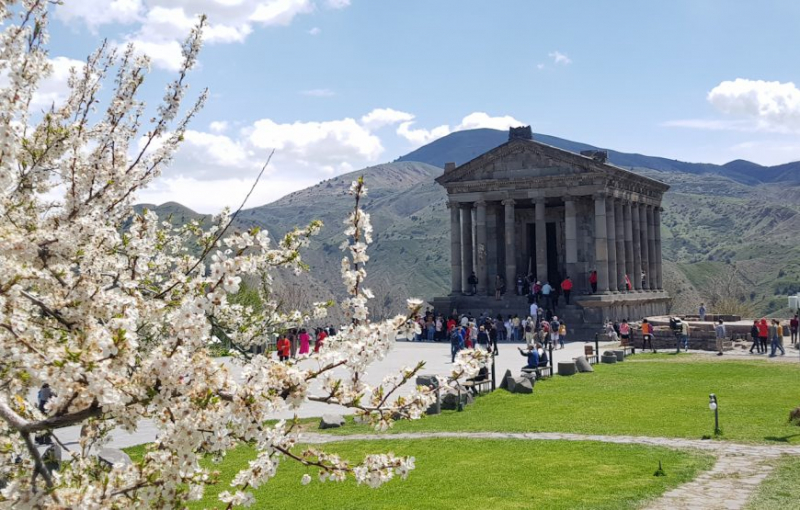Garni Temple
Garni Temple is Armenia's and the former Soviet Union's sole surviving Greco-Roman colonnaded structure. It is located in the central Armenian town of Garni and was built in the Ionic order. It is the most well-known pre-Christian Armenian edifice and emblem.
The edifice was most likely erected in the first century AD as a shrine to the sun deity Mihr by King Tiridates I. It was turned into a royal summer home of Khosrovidukht, Tiridates III's sister, after Armenia's conversion to Christianity in the early fourth century. Some experts believe it was a mausoleum rather than a temple and hence escaped the demolition of pagan monuments. It was destroyed by an earthquake in 1679. Renewed interest in the site in the nineteenth century led to excavations in the early and mid-twentieth centuries, and its ultimate rebuilding between 1969 and 1975, employing the anastylosis process. It is a major tourist destination in Armenia and the primary shrine of Hetanism (Armenian neopaganism).
Garni Temple is perched on a triangular rock overlooking the Azat River valley and the Gegham mountains. It is a portion of the Garni stronghold, one of Armenia's oldest fortifications, which was strategically important for the protection of the main cities in the Ararat plain. Tacitus' Annals of the First Century mentions it as castellum Gorneas.
Location: Kotayk













